Ukrainian civilians, aerial drones, better application of digital technology and a more adaptive attitude towards the use of the same artillery the Russians have had (until recently) has given Ukrainian artillerymen an advantage in terms of accuracy, timing and power. JL
Volodimyr reports in War Translated:
Russian regular troops studied in the same schools, with the same documents. Today, those who think, survive, not those who do what they have been taught. You must be cunning, move, develop, and do something new. And we, the artillerymen, are doing it. Western weapons allow us to disperse and have a longer range. We need “eyes”. We call civilians and ask: “Do you see this section of the road?” “I do.” “If a shell hits in a minute and a half, can you tell us roughly where it exploded?” “I can. Then the person would describe the place of the explosion, and we would open a Google map and see: there is such a place behind the vegetable gardens. (Without) aerial reconnaissance if the shooter does not see his target, the effectiveness of shooting is reduced several times.Below is a translation of an interview by Pravda.com.ua with the commander of the 43rd Artillery Brigade, Colonel Oleh Shevchuk. The Brigade’s chief of staff, Colonel Serhiy Ogerenko, also participated in the discussion (his answers are marked with S).
This interview opens many insights about the beginning of the war, particularly about the role of heavy artillery in Hostomel landing and destroyed tank columns around Kyiv. Besides, the interview is about the development of the Ukrainian army, the battles of 2014-2015, the comparison of different artillery systems, and the future of the war.
Original article in Ukrainian on:
Click here to access the interview on Ukrainiska Pravda
Authors: Olha Kyrylenko and Dmytro Larin (Pravda.ua)
Translation by @VolodyaTretyak (Twitter)
Translation:
Kyiv’s defense: the March to Troyeschyna, “wedding Mavics” and Russian paratroopers in Kozarovychi
(Interviewer): Mr. Oleh, one of the main battles of your brigade during the full-scale invasion was the battle for Kyiv. Could you tell us how it started? How did your Pions [Soviet-made self-propelled 203mm cannon] get to Troyeschyna?
(Oleh): We received the task [ on February 24], started the vehicles, and left. We marched 120 or 140 kilometers to designated areas, including Peremohy Avenue in Kyiv. There was no panic, but it was unusual, without a trawl, on their own, on a 47-ton gun – this was, of course, serious. You had to see it!
Two 2S7 Pion batteries moved toward Troyeschyna and one in the direction of Sviatoshyn. So we blocked Kyiv from both sides. Then came the targets: Gostomel, the airport, the airborne troops, and everything else. So we worked day and night.
(I): The soldiers of your brigade told us that before the invasion, they had been training in the Kyiv region.
(O): Yes, we did have a period of training, one of the divisions was trained in the Kyiv region to replace those performing tasks here in the east.
They were young guys, half of them conscripts, 21-22 years old. And so these Cossacks received orders, moved out on their vehicles, marched, and took up firing positions. And then the usual routine work: they got the target, aimed, loaded, fired, unloaded ammunition, loaded again, aimed, fired. I slept while standing and ate while standing.
(I): When did you open fire for the first time?
(O): Since there was rocket fire throughout the country on the 24th, our division moved out the next night to avoid being noticed, and on February 25, we started working.
(I): Were you the first artillery to defend Kyiv?
(O): I think so. Later, other brigades, including infantry, joined in. We established cooperation and started exchanging intelligence.
Civilians helped with drones. They called through messengers: “I can work today.” “Who are you?” “Marina, Dasha gave me your number.” Yes, Maryna and Dasha (these girls were UAV coordinators). “Okay, fly there; we’ll see what’s going on. ”
And it all started with these Mavics, now called “wedding” drones.
(I): So the civilians who used Mavicams to film weddings and travels were adjusting the artillery?
(O): They provided the picture. 4G, WhatsApp, a video call – the cameraman picked up, saw something, took off his phone, and said: “Look what I have.” I looked at it and said: “Hold it. We’re going to shoot now”. It was convenient.
And it was very good that there was a connection in the Kyiv region. It helped us out a lot.
Another example: we know the enemy is coming to a certain village, but we don’t know where exactly. We open a Google map, see a store, see its phone number, and dial it: “Good evening, we are from Ukraine! “Do you have any Katsaps in the village?” “Yes.” “Where?” “Behind Grandma Hanna’s house.” “What house does Grandma Hanna have?” “Well, everyone knows her!” So you talk to people a little bit and realize where everything is.
One guy from a gas station even gave us access to his camera. He said: “What am I going to explain to you? Here’s the password. See for yourself.” That’s how we saw our first “live” target – a column of Chechens near Novyi Bykiv [Chernihiv region, 60 kilometers from Kyiv], heading towards Kyiv. So we “met” them three kilometers further.
PHOTO: DMYTRO LARIN
(I): How realistic is it to hit a moving target?
(O): For a firing battery, there is no difference, but artillery luck also works here. If you calculated everything correctly – the enemy’s speed of movement, the flight time of the shell – then the result will be fire, sparks, and smoke. That is, it is what it should be.
(I): So you managed to hit a moving column the first time?
(Serhiy): Not always. That’s why we needed “eyes”. We also called civilians and asked: “Do you see this section of the road?” “I do.” “If a shell hits in a minute and a half, can you tell us at least roughly where it exploded?” “I can. Then the person would describe the place of the explosion, and we would open a Google map and see: yes, there is such a place behind the vegetable gardens.
(O): We had an 18-year-old boy in Motyzhyn whom we reached through the store’s phone number on Google map and said: “I don’t believe you.” So we turned on the video link, showed him our ID, uniform, and chevron, and he said: “I don’t believe you”.
Then we convinced him and worked closely together for about half a month while fighting in Motyzhyn. And every local in the village knows someone else, and that person knows someone else, so there are already people passing on information. So at first, I called from my number, and then we got a separate phone, and then it was not enough, so we got a second one.
Sometime in the fall, I called this guy from Motyzhyn and said: “Come, let’s get acquainted.”
(I): The Russians didn’t track him down during the occupation?
(O): No, and that’s very good.
(S): We lost contact with many people, and some said: “That’s it, I’m turning off my phone, deleting all my contacts. There are Russians in the next house.” Some people immediately said: “I’m scared, don’t ask me any questions.” But people called us from everywhere.
(I): Did you encounter the same kind of support from the local population in other regions where you worked, such as Kharkiv and Donetsk?
(O): In Donetsk and Kharkiv regions, we did not, but there are objective reasons for this: lack of communication and intimidation of the locals.
Not everyone is leaving these regions. Only those who believe that our state is here, on the controlled territory. Those who stay, unfortunately, either have nowhere to go or they meet [Russians] later. They say that their saviors have come, whom they have been waiting for. This is not a secret.
So you don’t know who to work with here. Although recently, there was information from the occupied territories about unloading equipment at the stations.
People are afraid, and you can understand them – you live once and want to live. That’s why there are other ways to collect information now: the eVorog system and analytical centers. And it all works – the data comes in a processed form, which is hard work.
(S): Look, during the Kharkiv operation, communication, intelligence, and interaction systems were already established. This did not exist in the first days of the war. Initially, military communications were not established at all, and all communication was via messengers.
PHOTO: DMYTRO LARIN
(I): Among the targets you worked on in the Kyiv region, you mentioned Gostomel and the attempted Russian landing. Can you tell us how it looked from your side? How did you see it?
(O): I didn’t see it – the National Guard, which was at the airfield, did. In most cases, I see a cross on the map – the target number, the nature, and the consumption of ammunition.
From what we saw, it was Russian paratroopers in Kozarovychi [20 kilometers north of Kyiv]. This was the first broadcast not brought to us by civilians but by our military scouts, the Special Forces.
That is, we knew where we were working, how many, and what kind of losses the enemy suffered, but we did not know how it physically happened. Now we can see every shot: everywhere we work, thanks to the entire Armed Forces system, command, surveillance, copters, including the people who buy them, we can see every shot.
(I): Before February 24, 2022, did your brigade have aerial reconnaissance men?
(O): No.
(I): When did you get them?
(O): Since February 24, we have been working with other people’s aerial reconnaissance men, and our own appeared in July. People went for training, and now we have enough copters and “airplanes” [airplane-type UAVs].
(I): Before the full-scale invasion, did your brigade not need aerial reconnaissance?
(O): There was always a need, but the application was different. The plan was as follows: the scouts would find the target, dictate its coordinates to us, and we would work on it, and that was it. But the practice has shown the following: if the shooter does not see his target, the effectiveness of this shooting is reduced by several times.
In addition, we do not rely on the number of ammunition but on accuracy. So why throw away 10-20 shells when you can use 3?
(I): How long does one Mavic last?
(O): For us – about a month, in the infantry – half a day. But it depends on how you use it because Mavic drones now perform different functions. Our quadcopters are generally more resilient than our “birds” [airplane-type UAVs].
(I): You say that you did not see your Pions knocking out the Russian troops from Gostomel. And what about the large burned column of Russian vehicles on Vokzalna Street in Bucha? This was also your work.
(O): I only know that there was such a target, but I did not see it with my own eyes, I saw it later, in the media.
But I went to see one of our results in person, in Kozarovychi. At first, they didn’t let me in, even though I was in uniform and driving a service car. A woman who was a security guard there said: “Hey, where are you going?” and I told her: “I’m the person who made a mess here,” and she said: “Oh, come in! Do you want some tea?”
There was also a man from the Luhansk region among the guards who told us that there were Russians in the warehouse we were shooting at-we saw them, thanks to the SSO guys.
So after the first raid, they moved to a warehouse of household appliances, and the windows there were blown out – and it was cold, it was March. So the Russians took 60-inch plasma TVs and filled the window openings with them. The guards and I had a good laugh.
PHOTO: DMYTRO LARIN
(I): What was your “fattest” target in the Kyiv region?
(O): I don’t even know. We were catching Soncepyoks and Pantsyrs, and everyone wanted to kill T-90s. Electronic warfare stations, control points, refueling stations – once you shot, you watched it burn for half the night.
There was so much enemy artillery that we were really hunting for it. Once a unit fired somewhere, that was it: we sent a drone there, caught it, and chased it.
(S): There is a famous video of a tank column of the 90th Tank Regiment entering Brovary, and we hit it in the village and then at the exit from the village. Not only was our unit involved, but all the artillery could reach the target, so we destroyed almost the entire tank regiment.
And they were driving brazenly: four in a column on the highway.
(I): How many pieces of equipment did you burn in the Kyiv region?
(O): It’s impossible to calculate exactly, but based on what we saw and recorded in the combat log, it was about 2500, maybe more. At first, we were counting, but then it became uninteresting.
There are targets like four self-propelled guns – you shoot at one, and all of them burn. Even when this epic with the Kyiv region was over, and the enemy started to retreat, we were “seeing them off” with our drone flying after them. That is, they were driving, blowing up bridges behind them, and we were filling them with a shell at every intersection to make them go faster [smiles].
Later, when we realized they had already left, we began to collect abandoned equipment in the forests – and there was a lot of it! As an artilleryman, I am interested in artillery: I remember where we fired and sent people to search for it. Then I get a report in the form of a selfie: I’m here, there are burnt out self-propelled guns, nothing useful. Not a single Kamaz, nothing.
(I): Were there any Pions in these Russian convoys to Kyiv?
(O): No, I did not see any Pions in the Kyiv direction. There were a lot of 2S19s [Soviet 152-mm self-propelled artillery systems], and they were quite good. Their work could even be shown as an example – two shots, rolling in the other direction, that is, they were not sitting there, believe me.
Assessment of the enemy, “Sovietness” in the army, and readiness of the Armed Forces for February 24
(I): How do you generally assess the enemy’s artillery during a full-scale invasion – the regular Russian army and the Wagnerites?
(O): Wagner’s men have no artillery training. In the normal sense, they are “convicts”. Russia has a double task here: to get rid of the mouths sitting in prison and eating up the budget but to get rid of them with benefits. They can show their maximum usefulness here.
As for the Wagnerians themselves, they are talking ear to ear: go, we’ll let you out in six months if you live. They also have professionals who joined the mobilization of prisoners, but I have never met them.
(I): Then what can you say about the artillery training of the Russian regular troops?
(O): We studied in the same schools, with the same documents. Today, those who think survive, not those who do what they have been taught. You must be cunning, move, develop, and do something new. And we, at least the artillerymen, are doing it.
Western weapons allow us to disperse and have a longer range.
PHOTO: DMYTRO LARIN
(I): Do I understand correctly that the Russian army lacks development and progress despite its superiority in human and technical resources?
(O): Yes, they are stagnant, to put it in a nutshell. Attempts to modernize something there are coming to an end…
(S): Some good equipment exists, such as electronic warfare equipment and unmanned aerial vehicles. I don’t know whether they have produced their Orlan since 2014 or 2015, but it flies daily. They have operators who are trained, skillful, and work in pairs. That is, their capabilities cannot be underestimated in any way.
As for the artillery, they mostly shoot at squares. Last summer, it was like this: evening starts, and they go – every forest belt, grove, ravine, where there are at least some plantings, regardless of whether there are people there, everything was shot at. They had no shortage of ammunition.
But there is another point here: the barrel’s service life, which we also experienced. At first it was “bang, bang, bang,” and then it went wherever it hit. We had guns where we had to replace the barrel twice.
As for the reconnaissance equipment: if we have been trying to hit targets with adjustments since the Kyiv campaign, they did not bother with this in the Kyiv region, and even more so here in the east. So they shot the normalized amount of ammunition, and that was it.
Then, somewhere in the second half of 2022, they also began to use drones, the same Mavic widely. Before that, their Orlans was flying in and adjusting the artillery. Stations for artillery reconnaissance and counter-battery warfare were and are still widely used.
Clearly, many of them were destroyed by our artillery and HARM anti-radar missiles supplied by our partners. But they still have these stations.
Also, according to my observations, their personnel, unlike ours, are trained in assault operations in the city. This applies to combined arms infantry units. In these matters, they have cooperation and support.
(I): How do you feel about the fact that the Russian military is often called “chmobiks” and ridiculed in every possible way?
(O): Why “chmobiks”? They are mobilized people like ours – absolutely the same. They have exactly the same initial training – none, I would say – and then they learn. The only difference is that the majority of our personnel, the majority, let’s say, mobilizes on their own. They realize that someone has broken into their home.
And they [Russias] were driven there, although there are also people who came on their own.
That is, one is defending his country, and the other has come and for some reason believes that he is defending his own. It’s a repeat of Afghanistan, where they also defended their country, and Syria. Is this what Russia was defending in Syria? Whom was it defending?
(I): Before the interview, Mr. Oleh, you told us that you were born in Russia and your father served in the Soviet Union. Have you ever thought that you would have to fight against Russia?
(O): I don’t know. On the one hand, I’m a military man – I know what kind of work I do, and what I’m needed for. I’ve been in the army for almost 30 years. I took an oath, I know what that oath is for. And Russia will be an enemy or some other state… So we have an enemy, and we are fighting with it.
And my father served in Russia – well, he did, I was born there, and my sister was born there. Many of us have relatives there-some have remained family, and some have already lost contact. Could I have imagined that we would be at war with Russia – no, probably not, but maybe yes. There is no answer.
– In what year did you take the military oath?
(O): У 1993.
PHOTO: DMYTRO LARIN
– Did you notice or feel any changes in the army then – how Soviet soldiers were becoming Ukrainian? What was happening in their thoughts and behavior?
(O): I didn’t think about it at the time, and it was a long time ago.
– Do you feel a difference between the military who joined the army in the USSR and those who joined in the times of independence?
(O): I don’t even know how to distinguish between them. In terms of their way of thinking, it’s not serious.
(S): It is quite easy to distinguish them. For example, there is a military town with six houses where the military, former military, or their relatives live. You walk around this town, and there are pensioners, officers of those times, and you hear: this is Ukraine, and in the Soviet Union, it was like this, sausage for 2.20, and now everything is so bad.
And when you start talking to them: “Why didn’t you go to Russia in 1991, 1992, 1993?” they have no answer.
(O): You know, the important thing here is not that “everything is bad in Ukraine, but it was good in the USSR,” but that they were 20 years old. They were not in pain, and the sun was shining. They went to work, and they fell in love. And today, they are in pain, itching, not given a pension, and paying high rent.
Someday we will also tell our children: “But it was good once,” and they will answer: “No, dad, it’s good now.” That is, it’s not about “soviet” upbringing. Although, of course, some still have a portrait of Lenin hanging in their homes.
I don’t know what a “soviet” general looks like. Any person in their position should do everything in their power, maximizing efficiency. And if people don’t do this, can they be called a “Soviet”? We have enough people born during the period of independence and sabotage work.
“Sovietizatism” – maybe ist a “illness “to do things about enough of what is required . Someone fights it, and someone gets sicker.
(I): According to your observations, has the Ukrainian army changed since February 24, 2022?
(O): Changes in the Ukrainian army began in 2014. Sometimes more, sometimes less, but the mechanism was launched – there were movements for the better. But I think it’s not the right time now, we need to fulfill another task and then make reforms. Now we need to use all available resources.
(I): Do you feel that the military has become a privileged group in society? That everyone admires you?
(S): To feel this, you need to be in society, you know?
(O): I admire the Chief of Staff, he admires me, and everything is fine [laughs]. When you enter a different environment, you see that attitudes change, which is good.
At the same time, when you see sins on our part, for example, “avatars” [drinkers in the army] at bus stops, you want to kill them. Some people can even afford a corruption scandal.
This is unacceptable. Someone earns a positive image for the Armed Forces, and someone…
We are just people doing our job. During the coronavirus, people admired doctors, and now they admire the military. Will we start respecting plumbers when the Dnipro dries up? What kind of people are we? Why do we need something to hit us on the head to understand something?
In 5-6 years, students of medical schools and medical institutes will start graduating, and then we will remember them.
(S): Yes, those who studied online [both laugh].
(I): You say that changes in the Ukrainian army began in 2014. A year ago, on February 24, when the first missiles flew into Ukraine, was the Ukrainian army ready to “meet” the Russian army and fight back?
(O): Yes, definitely, yes. Of course, there was a lack of ordinary soldiers, mechanics, loaders, and riflemen, but the army itself as a structure was ready for this. We didn’t have the state of “ahh, what to do?”. The offensive was a matter of time.
PHOTO: DMYTRO LARIN
(I): At the beginning of the interview, you mentioned that on February 24, one of your divizions was here in the east?
(S): Yes, one battery was operating in the Luhansk region, in the Sievierodonetsk direction, and two batteries were working in the Donetsk region, closer to Mariupol and closer to Donetsk.
(O): Ours were stationed all along the line. Like all units, we were scattered. Our area of responsibility started in the Zhytomyr region and stretched across the east and south to Mykolaiv.
In April, our westernmost battery was in Volyn, and our southernmost battery was behind Mykolaiv. Imagine this “horseshoe” along the state border.
They had their combat mission, and from the beginning of February 24, they received a command, moved to their positions, and performed their tasks. They destroyed infantry and equipment.
(I): Mr. Oleh, who was the person who told you in person or by phone that the war had started?
(O): There was a big bang at the Boryspil airport, I heard it, and in 7 minutes, I was already there. Everyone was running. Who was the person who told me… the duty officer, probably.
(S): At 5:10, we heard the first explosions. At about 7:45, one of the Kalibr missiles flew directly over the military unit toward Brovary. There was no need to say anything. Everyone understood that sooner or later, it would start. Everyone was preparing.
(O): As military men, we understand how wars begin. It’s always the same: the destruction of air defense, landing, and passage of enemy columns. There will be nothing new, and all wars are fought like this.
Of course, I couldn’t imagine how it would be possible to launch missiles at another country, at peaceful cities. How disconnected from reality do you have to be to give this command, and how disconnected to press a button to execute it?
I still can’t understand how the Russian military executes these commands, how they launch missiles from these MiGs, knowing where they will go. They do know! They see what coordinates are entered there.
A soldier with an assault rifle knows where he is going, an artilleryman knows, a tanker knows, and a pilot knows. How can you shoot at a shopping center where there is nothing military? Well, to hell with it. Shoot at an army base, at a military target.
Return of “Pions” to service, operation of “Panzergaubits”, explosions in warehouses and the scenario of the end of the war
(I): Mr. Oleh, a few questions about the weapons you work with. What is your ammunition supply – do you have enough to fire the Pion?
(O): Each projectile will find its target. We have enough to shoot with. Of course, we would like to have more shells, but we have what we have. Of course, we don’t spend as much in the east as we did in the Kyiv region.
(I): What was your consumption of shells in the Kyiv region?
(S): It was up to 600 shells per division, and a division is 12 guns [about 50 shells per day per gun]. The ammunition of one gun is 40 rounds, so we were shooting from half to one round per gun on average.
PHOTO: DMYTRO LARIN
(O): It seems that the loading of the ammunition never stopped at all. The work was frantic.
(I): Is the number of daily shells per gun in the Donetsk region much lower now?
(O): There were times when it was higher.
(S): But you have to understand that the density of artillery in the Kyiv and Donetsk regions differs significantly. In the Kyiv region, you could count the guns on one hand.
(I): In Ukraine, the Peonies were written off for some time. How did they come back into service?
(S): In the early 2000s, in 2002, I think, they were decommissioned by the Armed Forces, handed over to the bases, and stored there until 2014.
In 2014, when the ATO began and it was realized that there was a need for such powerful artillery systems, it was decided to remove them from storage and bring them into a combat-ready state. And so it was decided to form our brigade.
(O): In general, this gun was created to deliver a nuclear warhead to the target. And then disarmament began. People started cutting up ammunition, handing over everything, giving it away, the conventions on non-use, and the need for Peonies also fell. Although 152-mm howitzers deliver the same ammunition to the target.
Another thing is that we, as a state, have signed a document according to which we do not have such ammunition. Although I think some warrant officer once hid such ammunition in his basement and forgot it was there [laughs].
(I): In what areas did the Pions operate after the decommissioning and until February 24, 2022?
(S): They were used from December 2014 to April 2015. It was the area of Donetsk airport, the withdrawal of our troops from the encirclement in Debaltseve. Practically in the same areas as now.
And then, the Minsk agreements were signed, heavy weapons, namely artillery systems, were moved behind the withdrawal line, and since then, there has been no combat use of Pions. We maintained their combat potential, conducted training, and were ready to strike at the first command.
(I): Have you heard anything about a Tyulpan, a 240-millimeter mortar allegedly available in Ukraine? There are such rumors.
(O): There is not a single Tyulpan in Ukraine, that’s for sure.
(I): Besides the Pions, your brigade also has Panzergaubitzes, German 155mm self-propelled artillery systems – how do you find them in use?
(O): Good modern weapons made with love for people and the goal of fulfilling a combat mission. To win quickly, accurately, and efficiently, with a wide range of ammunition and a high level of computerization. On the one hand, this is good, but on the other hand, it is not very good because a person quickly gets used to one good thing and gets unaccustomed to another.
(I): From the Soviet Gvozdika, for example?
(O): Not so much from the Soviet one… When you drive a Mercedes, you don’t really want to get into a Zhiguli [Lada]. But in reality, Panzergaubits are very good weapons, with their own “diseases,” of course, they break down like any other equipment. But we need more such weapons.
(I): How long did your guys learn to work on Panzergaubits?
(O): About a month and a half. At first, we were trained in batteries in Germany, and now unit commanders, sergeants, and gunners are training other soldiers so that we can have both replacement and development.
(I): Sooner or later, the life of the Pions will be exhausted, and Ukraine does not produce new ones. What of the existing weapons or those provided by Western partners can replace the Pions?
(O): While as of February 24, Pion was our longest-range artillery, this is no longer the case. Panzerhaubitze, Krab or Caesar can easily outbid the Pion.
Some of the ammunition provided by our Western partners today can easily accomplish the task at 50-70 kilometers.
But we should also consider the power of the ammunition itself: a 203-millimeter shell is still a 203-millimeter shell. It’s enough to destroy a command post in a two-story building or some command post in concrete.
Every weapon, every ammunition has its purpose. Well, This is what people invented to kill each other, right?
(I): What weapons do you lack now? What kind of howitzers?
(O): Howitzers? We lack electronic warfare and air defense. We have everything else, in principle. We need tactical-level air defense, i.e., conventional man-portable air defense systems.
(S): According to the Soviet staffing, each Pion crew was equipped with a Strela-2M MANPADS and an anti-aircraft gunner. Because Ukraine simply does not have these anti-aircraft gunners, the man-portable air defense system was replaced with a 5.45 handgun [light infantry machine gun].
(I): We have already asked this question of the 45th brigade’s commander, Colonel Oleh Faidyuk, but we will ask you again. When were artillery depots exploding all over Ukraine before 2014 and especially after, did you ever feel that there was a targeted sabotage?
(O): This targeted sabotage was going on even before 2014. Remember Novobohdanivka in the Zaporizhzhia region. I understand this was all done with the help of people in power, these Lebedevs, Salamatin, and so on.
Then there was the utilization of ammunition from 2012-2013 – the newest Soviet shells were cut up. Gun barrels stored at the bases were destroyed.
With the help of its proxies, Russia was purposefully destroying Ukraine’s Armed Forces. But everyone is like that: “Well, Russia is our brother, our neighbor. It will not attack us.” Some people did not believe it, and some people helped with their deliberate participation – that’s all.
PHOTO: DMYTRO LARIN
(I): During these explosions at the warehouses, did you think it might be an attempt to weaken Ukraine before a major offensive?
(O): We knew it. There was nothing to think about. No warehouse explodes for no reason. It’s a big engineering development involving counteracting various factors – from fires to earthquakes. These are crazy safety measures.
Perhaps during the first explosion, it was not clear what it might be during the second. And then 2014, the war, artillery depots burning, some of them twice – how can this be?
(I): So Russia has been preparing for an offensive for a long time, since the early 2000s?
(O): Absolutely. This is geopolitics, but they need a buffer around their country-a place where something is constantly happening, where they can distract the attention of their people, so it’s easier to control the herd. Therefore, everything was planned in advance: the right people were gradually appointed to the positions of defense ministers and presidents.
I don’t know why we, the whole nation, didn’t notice this before. Did we want to see it, and could we?
(I): How can we, as a society, prevent these mistakes in the future?
(O): In the future? Our parents voted for these presidents, and we elected this government. And you still have it ahead of you. To avoid making mistakes, read books, and see how it all ends. And then everyone has to do their job well. This is the only way.
(I): Last question: Describing Russia’s offensive on Kyiv last year, you said that all wars start similarly. How do they end? What are the scenarios for the end of this war?
(O): All wars end at the negotiating table. What is said at this table will depend on what the parties come to. In any case, there will be a winning and losing countries.
What can be considered a loss and a victory today? I don’t know. How can burn territory or killing people, for example, be considered a victory?
(S): Even if we push the enemy beyond the state border, I will never consider it a victory. This is the cessation of the war for a certain period, no more.
(O): A complete victory can only be the destruction of the entire system that exists there. Because to have a time bomb nearby…
(I): As for the negotiating table: do you think there are territorial compromises that would be acceptable to Ukrainian society?
(O): No, there can be no compromises. No giving something away to get something in return. There are fixed borders recognized by the international community. Whether politicians want it or not, whether they will contribute to it or not. The people will not allow it.

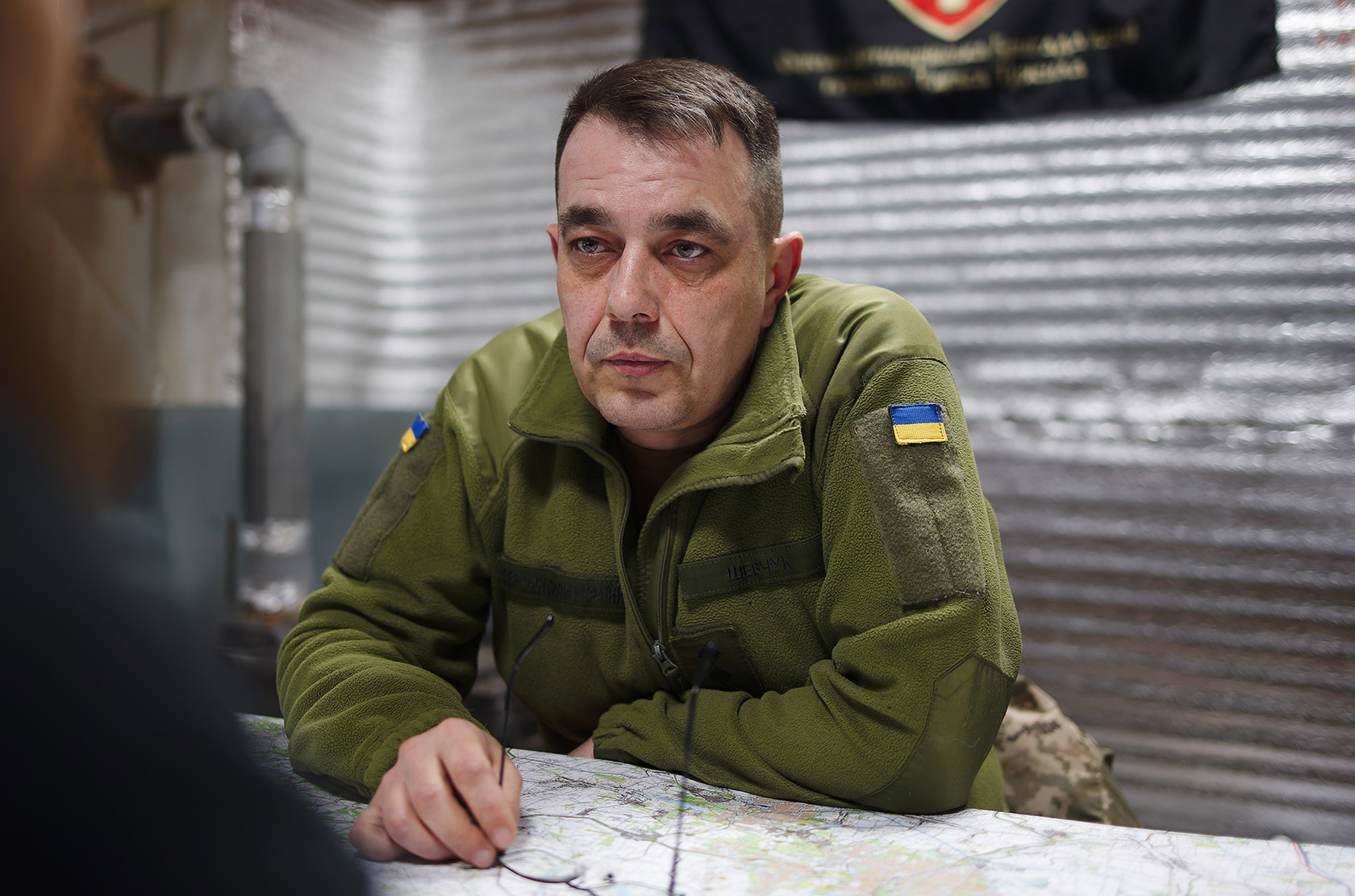
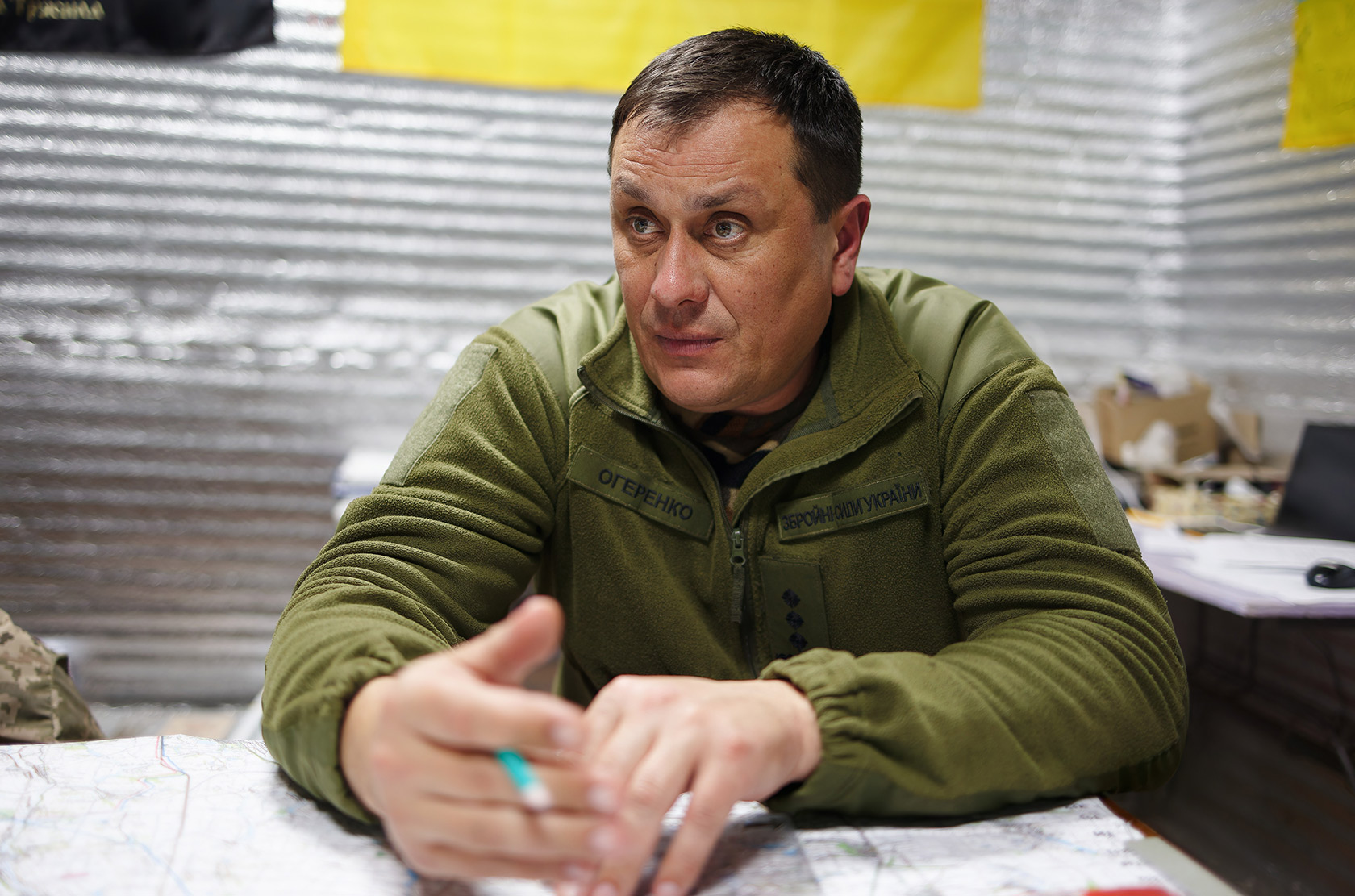
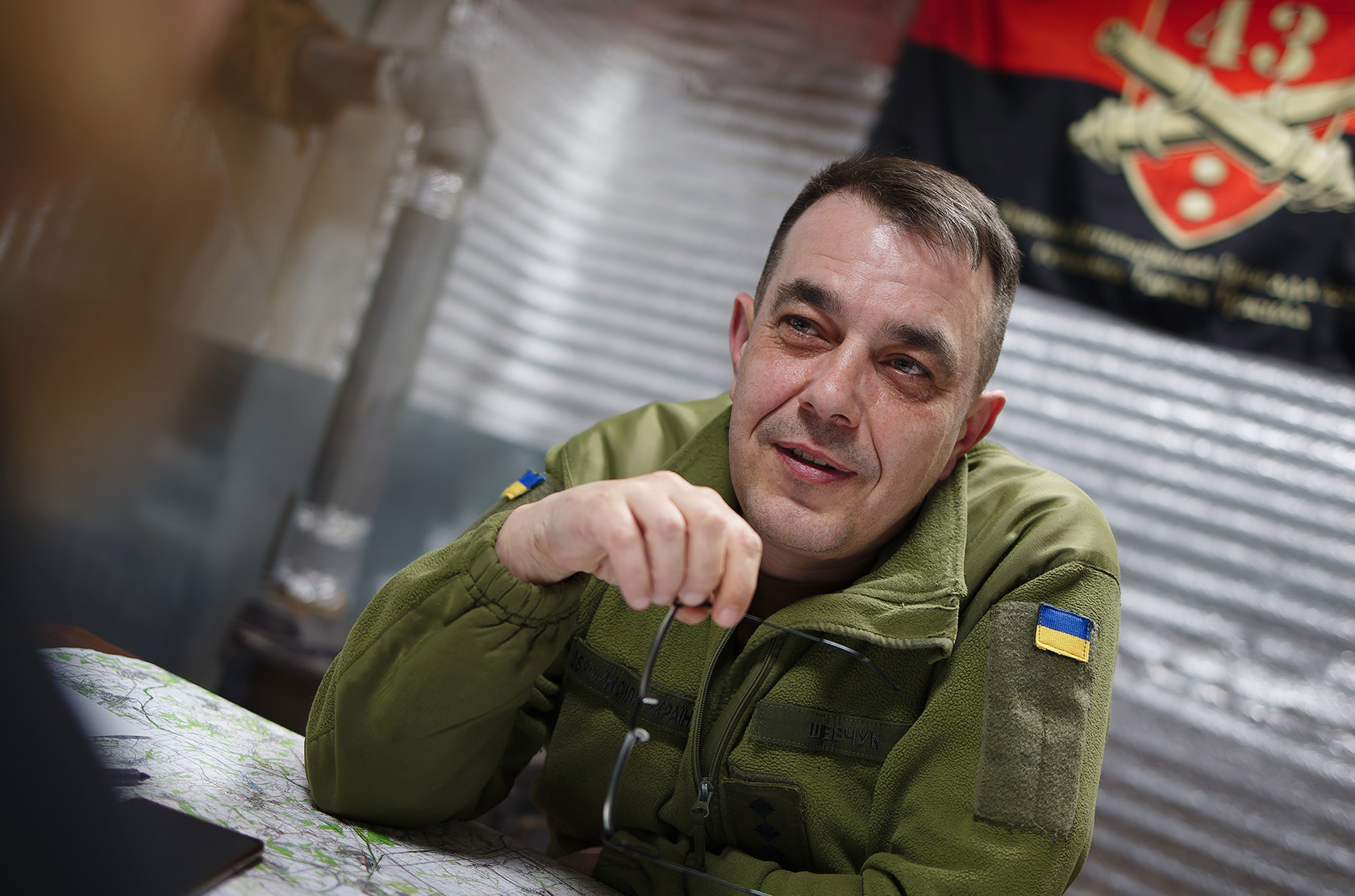

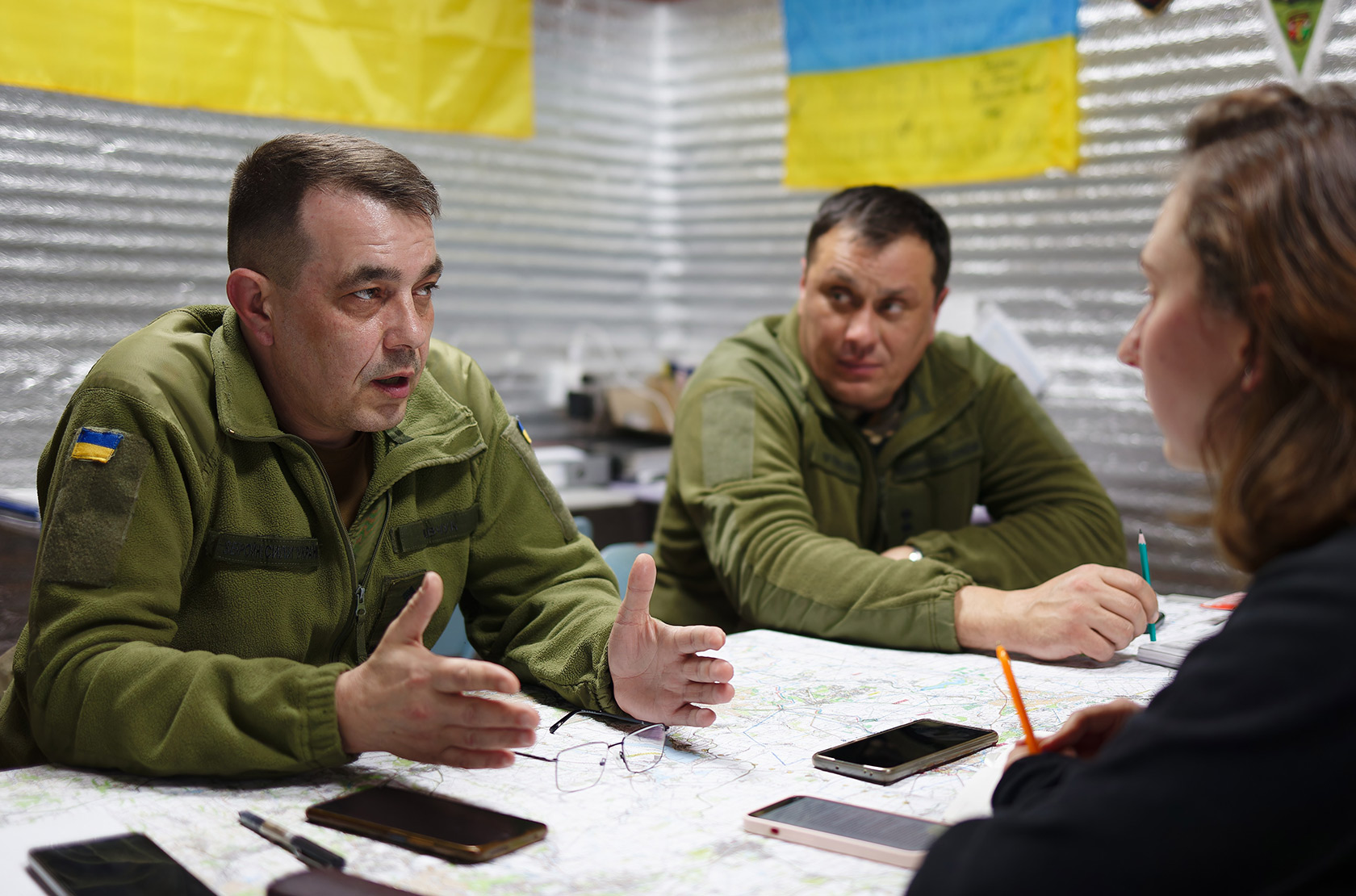
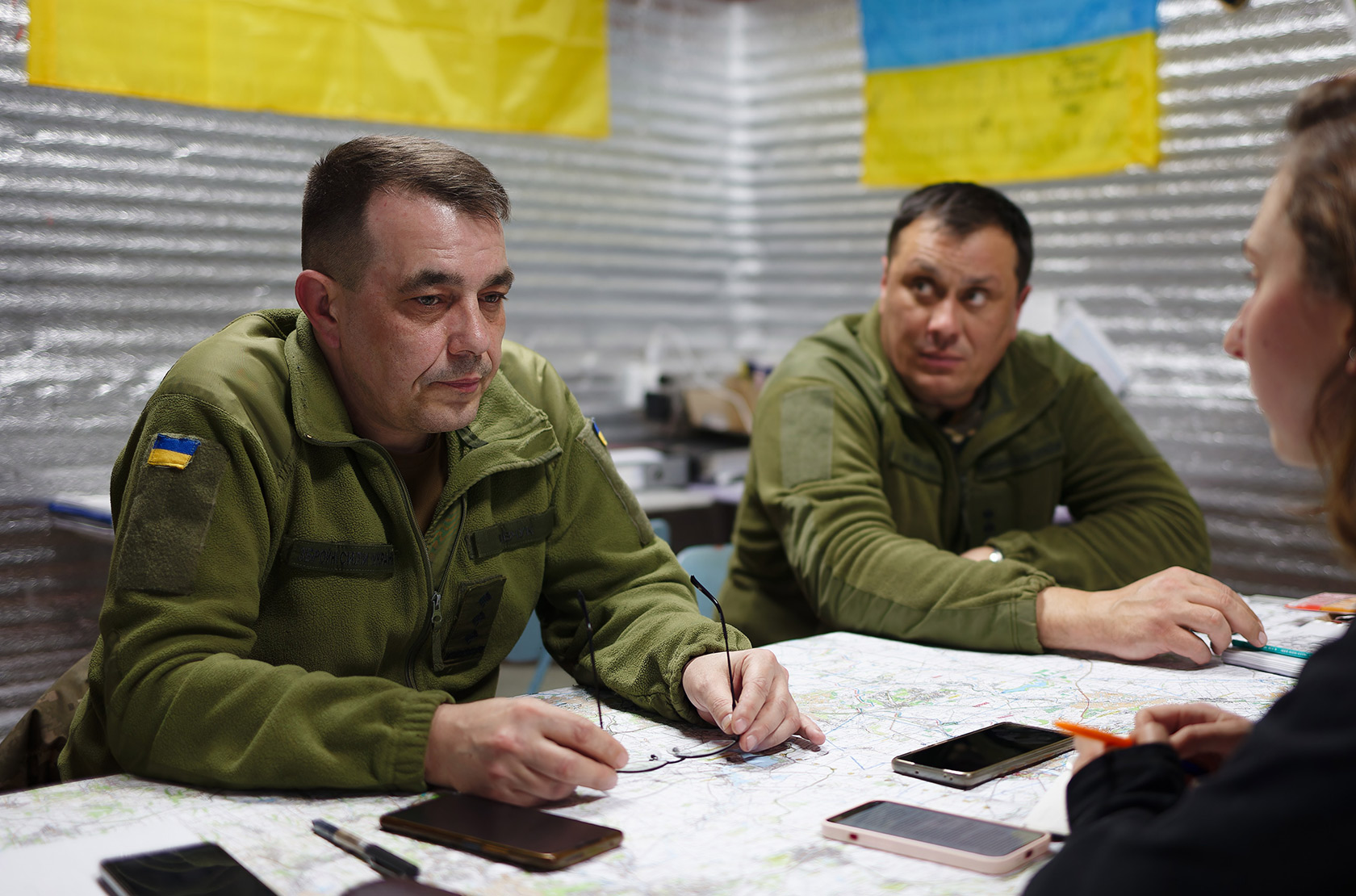
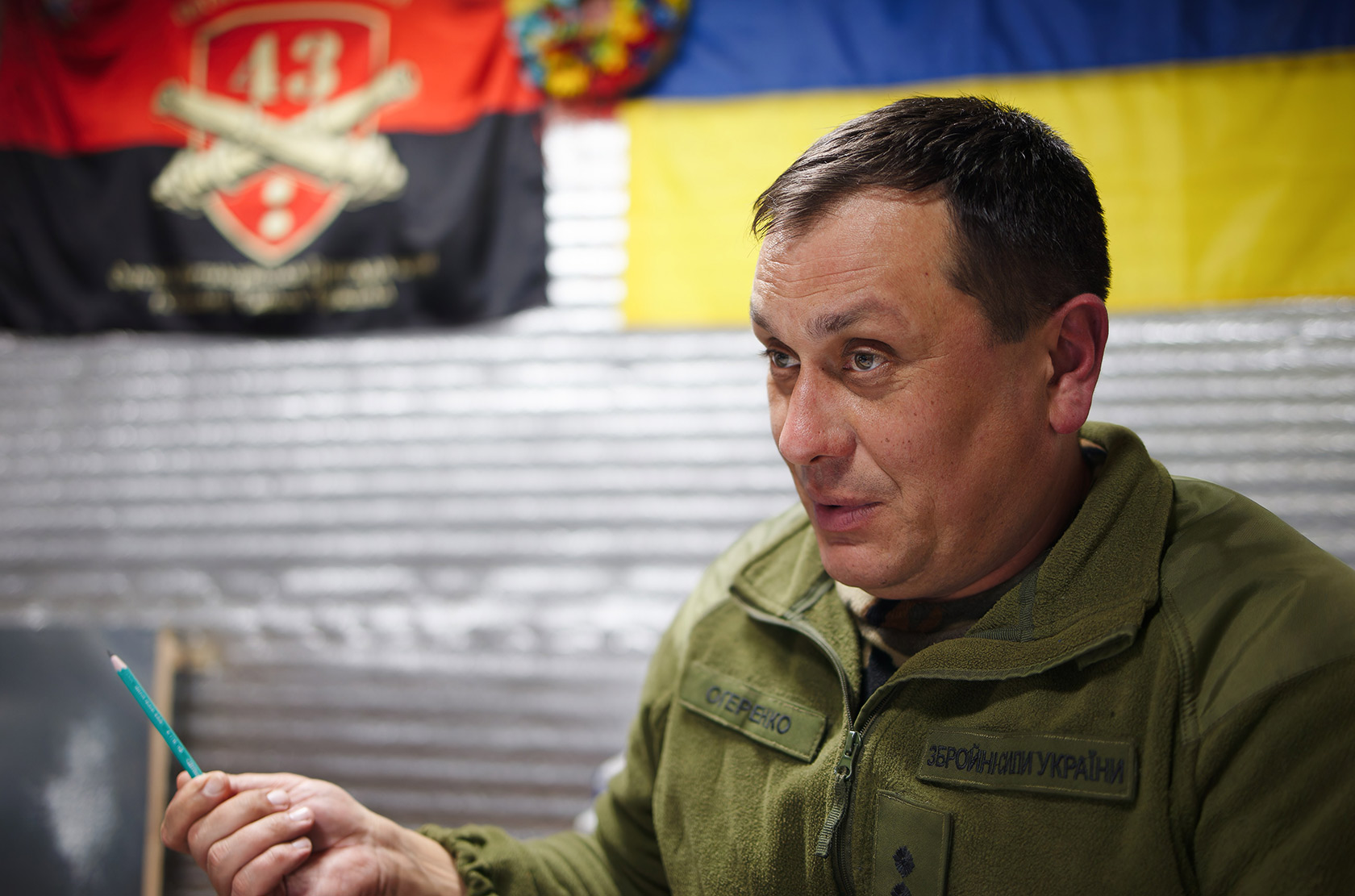
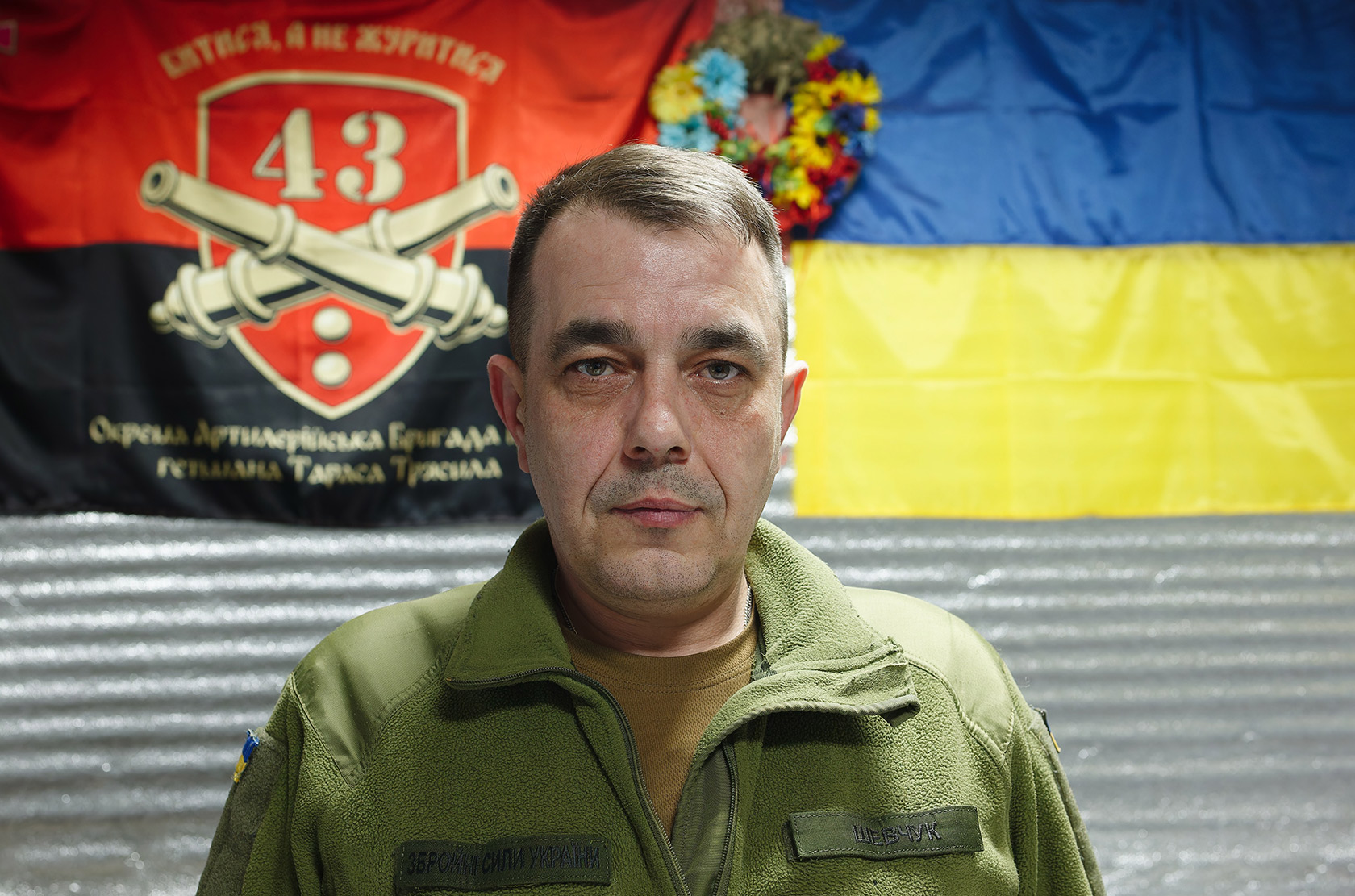


















0 comments:
Post a Comment